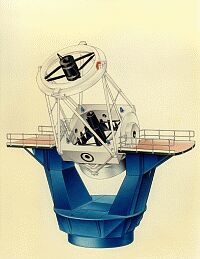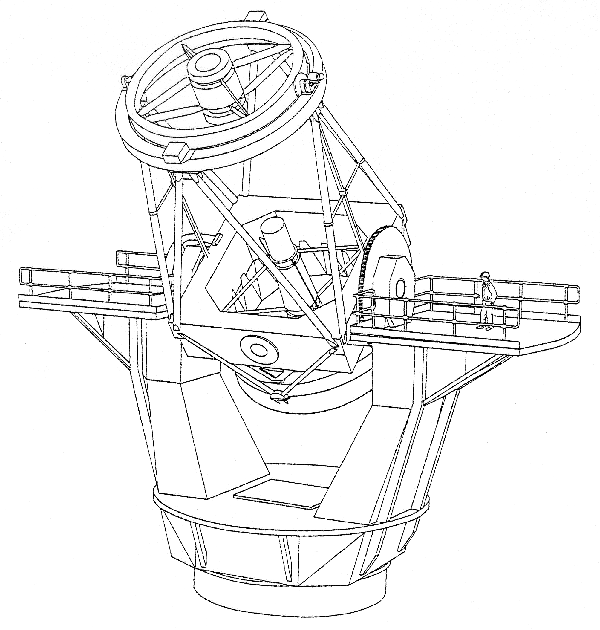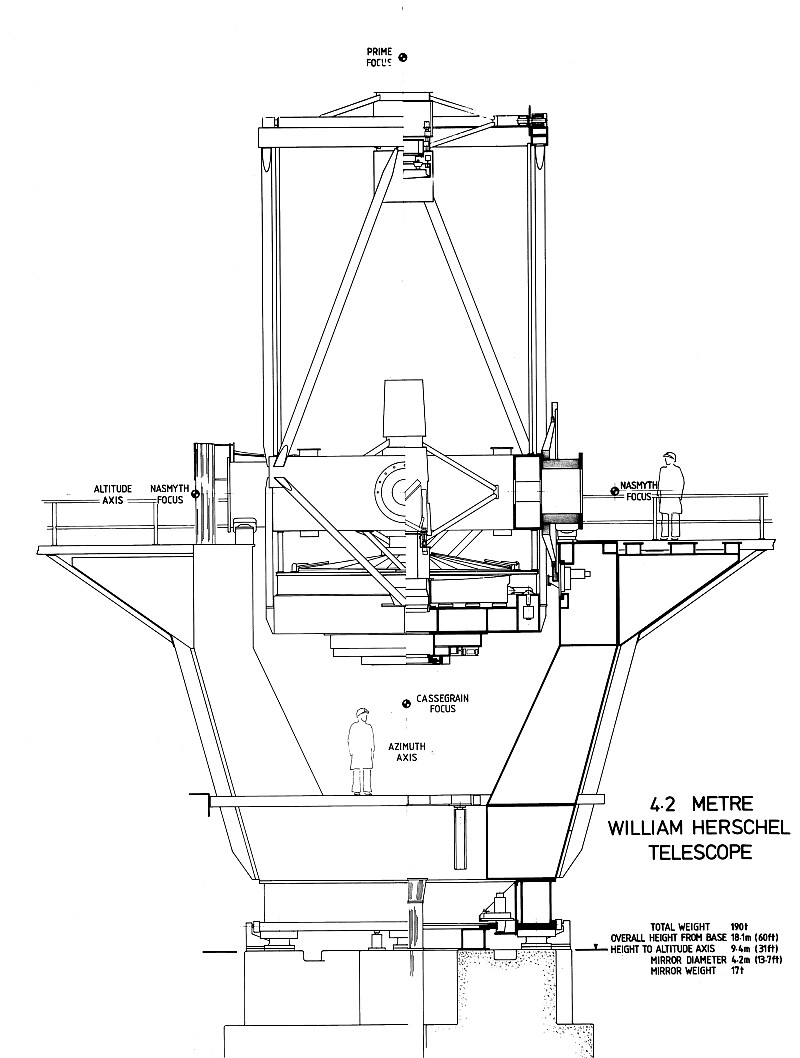 The William Herschel Telescope has
an altazimuth mount. Maximum rotations are 0-95° from the horizontal
and ±270° about East. While observing, however, the accesible
altitude is limited to 89.8°-12.0°. The reasons for these
limitations are the existence of a zenith blind spot for
zenital distances lower
than 0.2° imposed by the speed limit in azimuth and that the telescope is
partially obscured at elevations below 12° by the dome rail. The William Herschel Telescope has
an altazimuth mount. Maximum rotations are 0-95° from the horizontal
and ±270° about East. While observing, however, the accesible
altitude is limited to 89.8°-12.0°. The reasons for these
limitations are the existence of a zenith blind spot for
zenital distances lower
than 0.2° imposed by the speed limit in azimuth and that the telescope is
partially obscured at elevations below 12° by the dome rail.
For each axis, the servo control system
has three feedback loops: (a) current or torque, which is generated within
the control electronics, (b) velocity, from the tachogenerator and (c)
precision rate, which is developed either from a 17-bit incremental shaft
encoder driven through a pinion off the main gear or a 20-bit roller driven
encoder, each giving the same accuracy of 0.03 arc sec. Absolute position
is obtained from a pair of gear driven shaft encoders on each axis of the
telescope. For tracking, a local torque loop around the two motors in each
axis maintains continous gear tooth contact during all tracking accelerations
up to a maximum of 0.02°/sec². On the rare occasions when tracking
an object which passes closer to the zenith than about 0.2°, observing
has to cease temporarily while the telescope traverses a 'blind' region
through which it will not be able to track continously. During this time,
which is less than 3 minutes, the telescope slews through a large azimuth
angle (180° if the object happens to pass through the zenith), to reacquire
the object as it leaves the blind region.
In normal use, all the telescope
drives are controlled from an operations desk by means of a computer system
which communicates with each of the motors and encoders through a parallel
CAMAC system. All the instrument turntables and cable wrap devices are
controlled in sympathy with the telescope motion, as well as the positions
of the dome observing slit and windscreen.
The altazimuth design of the telescope means that the field of view rotates
as the telescope tracks. In order to
compensate for this, it is possible either to mount instruments on a
turntable or to place image derotation optics in the
beam. The former option is used at the Cassegrain and prime foci, but at
Nasmyth, only light instruments may be
mounted directly on the turntables and heavy apparatus, which must be kept
stationary, is used with image derotators.
The telescope mount weighs 80 tons, or 186 tons including the fork structure.
|





